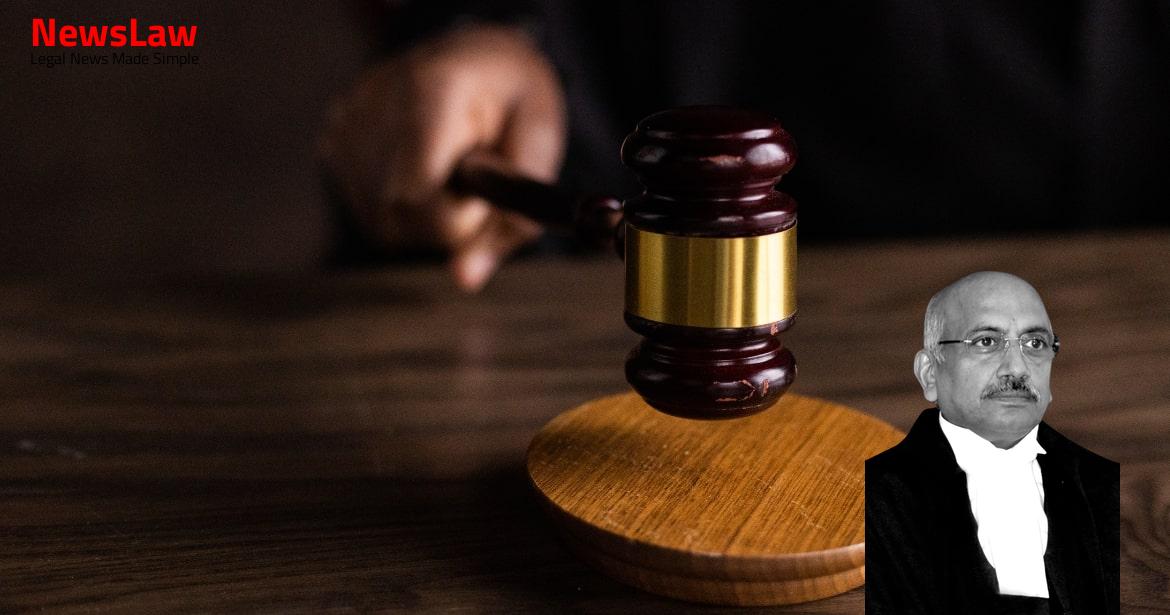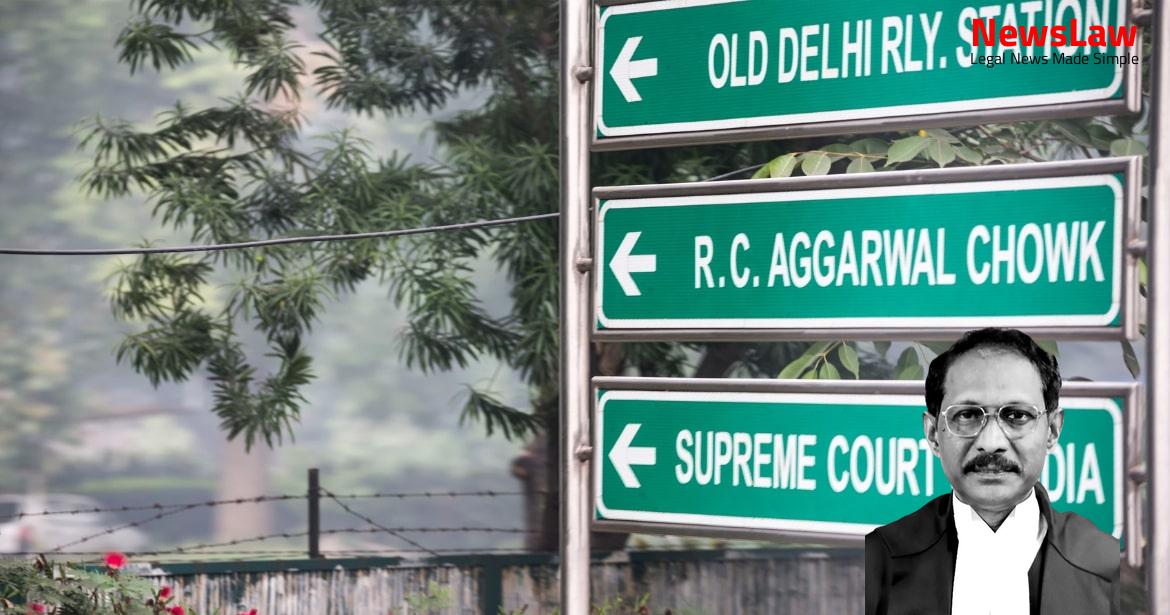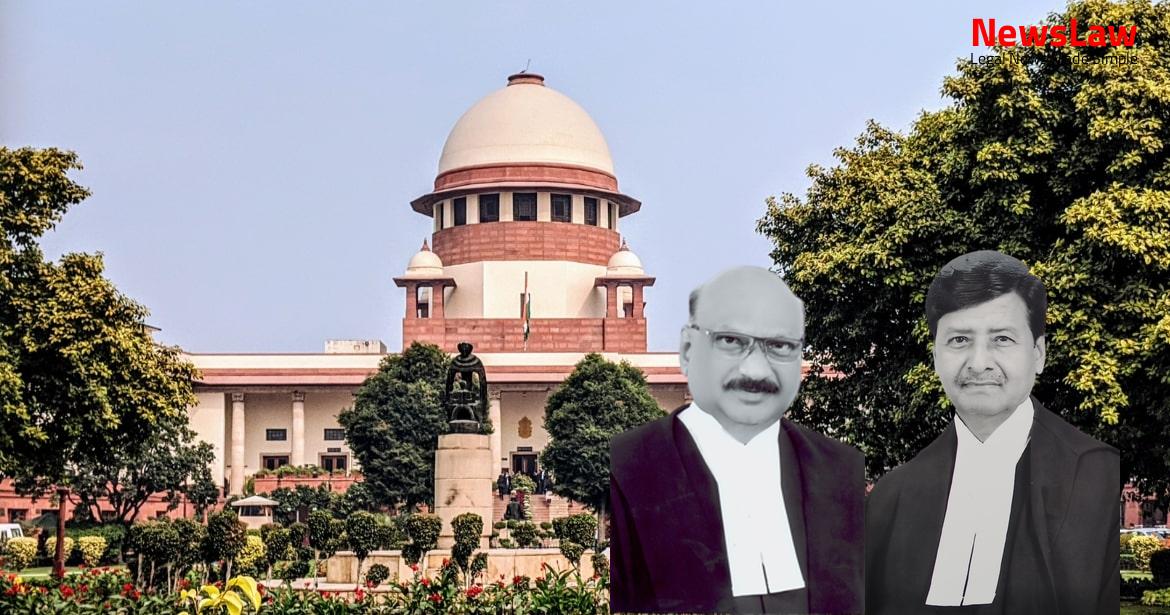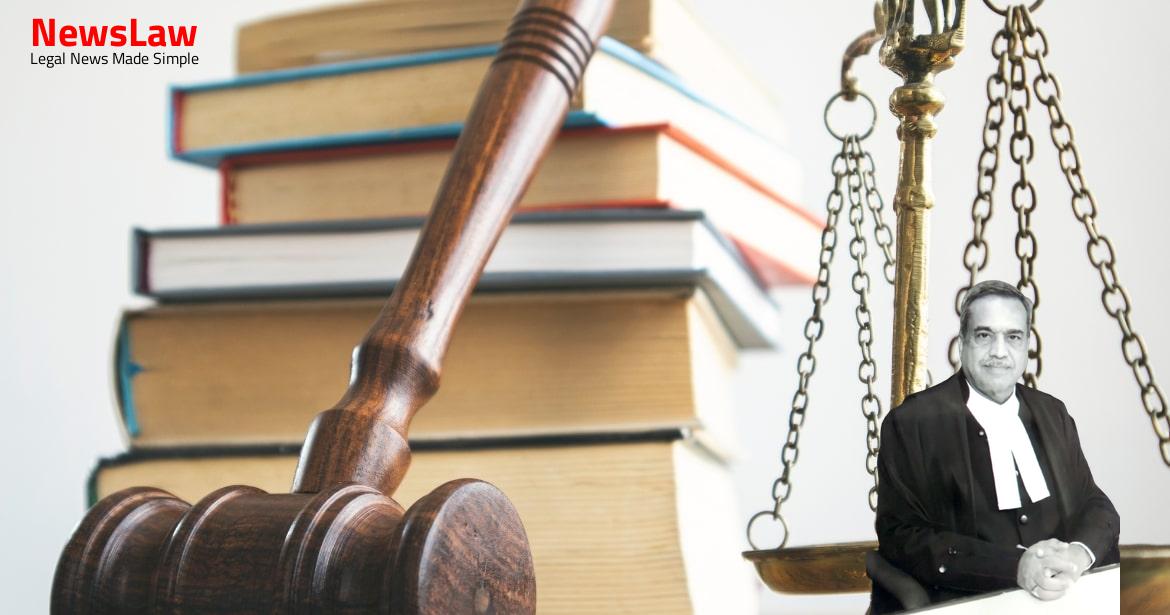Delve into the intricate legal analysis surrounding the juvenility plea in age determination as observed by the court in a recent case. The court’s detailed assessment of evidence, including ossification tests, medical reports, and witness credibility, provides valuable insights into the challenges of determining age in legal contexts. Stay tuned to uncover the complexities of age determination in legal proceedings.
Facts
- The appellant relied on the family register maintained by the Panchayat, Aadhaar Card, and an order passed by the High Court in 1982 to support his plea of juvenility.
- The appellant claimed to have filed a criminal miscellaneous application before the High Court, asserting his juvenile status at the time of the offense, which was not decided upon before the appeal was dismissed on merits.
- An Arms Licence was granted to the appellant on 24.7.1982, after the date of the incident, based on the report of the Radiologist stating his age to be between 15½ – 17½ years.
- The High Court granted bail in a previous order relying on the Radiologist’s report regarding the appellant’s age.
- The appellant filed Criminal Miscellaneous Application No. 382916 of 2015 before the High Court, raising the plea of juvenility.
- A police report submitted around 28.3.1982 mentioned that no criminal case was registered against the appellant.
- The appellant listed his date of birth as 30.12.1961 in an application filed around 21.12.1981.
- The appeal against the appellant’s conviction under Section 302 read with Section 34 of the Indian Penal Code, 1860 was dismissed by the High Court.
- The appellant applied for bail before this Court, citing his juvenile status at the time of the incident on 20.7.1982.
- A Medical Board consisting of five doctors was formed to assess the appellant’s age at the time of the incident.
- The High Court directed the State to produce original documents related to the Gun License.
- In response, the State filed an application on behalf of the appellant to seek the Arms License.
- Based on a medical report, the High Court concluded that the appellant was a juvenile at the time of the offense.
- The Medical Board’s report stated that the appellant’s age is between 40-55 years.
Also Read: Critical Analysis of Circumstantial Evidence in Arson Case
Arguments
- Mr. Gopal Sankaranarayanan, senior counsel, argued for the appellant
- He emphasized that the accused was granted bail by the High Court based on his age being 15½ – 17½ years in 1982
- The appellant should be considered a juvenile in accordance with this order
- Rule 12(3)(b) of the Rules is now part of Section 94 of the Act, making the ossification test the basis of determining juvenility.
- The procedure under Rule 12(3)(b) of the Rules is not substantially different from that in the Statute, with the discretion to lower the age by one year omitted.
- Medical evidence like ossification tests is considered useful but not conclusive for determining age, subject to a margin of error and to be weighed along with other circumstances.
- The courts have emphasized that as individuals cross the age of thirty, the ossification test may not be regarded as definitive due to the imprecision in determining precise age.
- Evidence from radiological examinations is noted as a guiding factor in determining age but is not incontrovertible, and must be considered in conjunction with other contextual factors.
- The credibility of a witness like Ram Naresh Singh (PW-1) can be affected by disbelief in certain aspects of his testimony, impacting his reliability in determining the role of the appellant.
Also Read: Analysis of Commencement Date in Gratuity Act Amendment Case
Analysis
- Section 94 of the Act does not have a provision for the benefit of a margin of age, unlike Rule 12 of the Rules.
- The appellant submitted an Arms Licence application before the incident, indicating an age above 21 years.
- The procedure in Rule 12 and Section 94 for age determination is similar, primarily based on physical appearance.
- Ossification test results may not always be reliable for determining age, especially when conducted years after the incident.
- The court did not apply the ‘Falsus in Uno, Falsus in Omnibus’ rule to disregard evidence.
- In the absence of reliable medical evidence, the ossification test conducted much later cannot conclusively establish the appellant’s age as juvenile during the incident.
- Non-examination of a witness, like Girendra Singh, may not be significant if the evidence from other witnesses and medical reports establish guilt.
- Under Section 94(2) of the Act, age determination may involve ossification tests or latest medical age determination tests ordered by the Committee or Board.
- The prosecution is not required to examine all witnesses, and a part of a witness statement can be relied upon for conviction.
- An interim bail order is not a conclusive age determination, especially without supporting medical evidence.
- The reliability of ossification tests remains questionable, similar to the doubts raised under Rule 12 of the Rules.
- In case of doubt, a formal age determination process is necessary, particularly when a person is around 18 years old.
- The appearance-based age observation by the Committee or Board can suffice without further confirmation in obvious cases of a child.
- Juvenility plea can be raised at any stage, even after finalization of court proceedings.
- Rule 12 of the Rules provides a process for age determination, which includes the usage of ossification tests.
- The importance of ossification tests for age determination remains consistent, as evidenced in the postmortem reports detailing multiple injuries inflicted by more than one person.
- Bones structure is not helpful in determining age for individuals around 40-55 years old.
- Court’s decision in Arjun Panditrao Khotkar v. Kailash Kushanrao Gorantyal emphasized that law does not demand the impossible.
- In Abuzar Hossain alias Gulam Hossain v. State of West Bengal, it was stated that when a claim of juvenility is raised in court, an inquiry with necessary evidence must be made.
- Recent judgment in Ilangovan v. State of T.N. highlighted that Indian courts are hesitant to apply certain principles as they are only rules of caution.
- Section 9(2) of the Act is similar to Section 7-A of the 2000 Act.
- If the exact assessment of age is not possible, the Court or Juvenile Justice Board may consider the child’s age on the lower side within a margin of one year.
- Rule 12(3)(b) of the Rules states that if necessary documents are not available, a Medical Board will provide a medical opinion to determine the age of the juvenile.
- The court did not find any merit in the present appeal
- The appeals were considered and the court came to the decision that there was no basis for them to be successful
- As a result, the court concluded that there was no justification for granting the appeal
Also Read: Interpretation of Will and Hindu Succession Act: Legal Analysis
Decision
- The RPC claim was dismissed by the court.
- The court found no merit in the RPC argument.
- The RPC claim did not withstand legal scrutiny and was rejected.
- The court ruled against the RPC based on the evidence presented.
- The RPC was deemed unfounded and thus dismissed.
Case Title: RAM VIJAY SINGH Vs. STATE OF U.P. (2021 INSC 120)
Case Number: Crl.A. No.-000175-000175 / 2021



